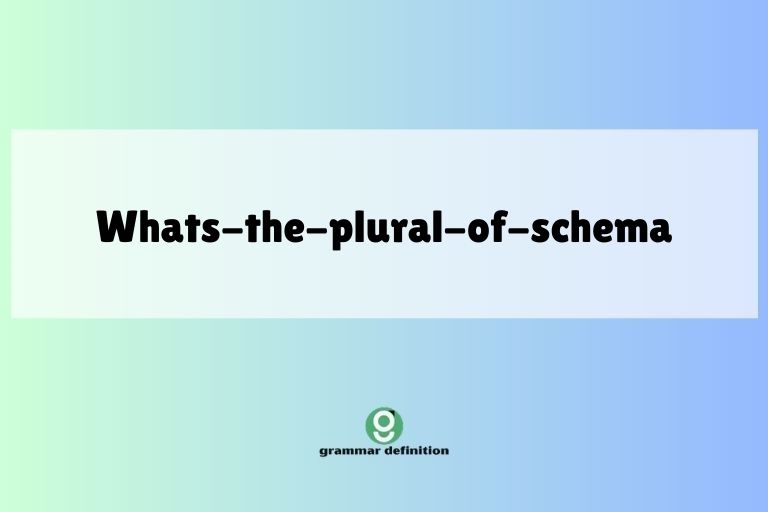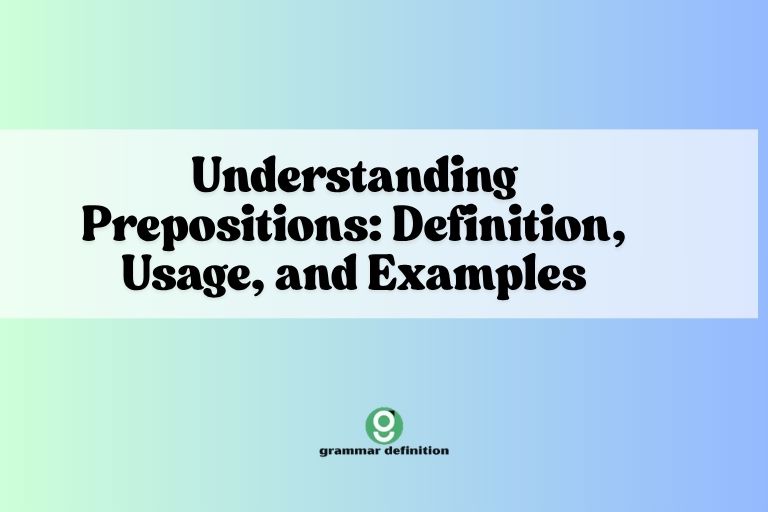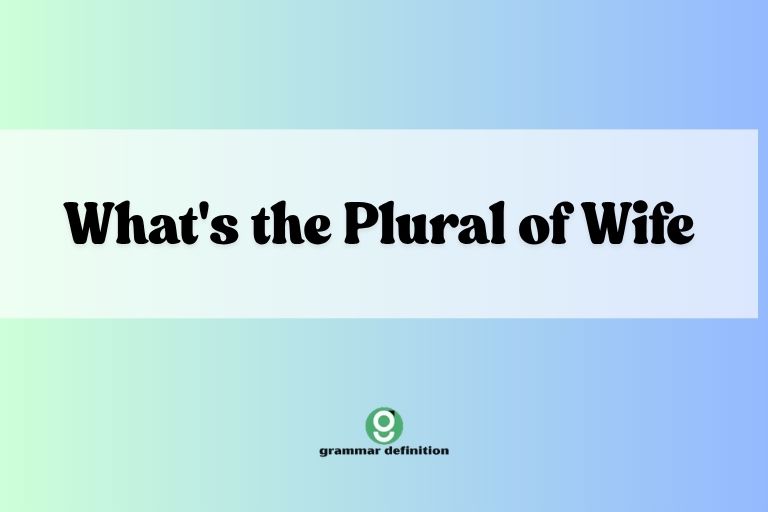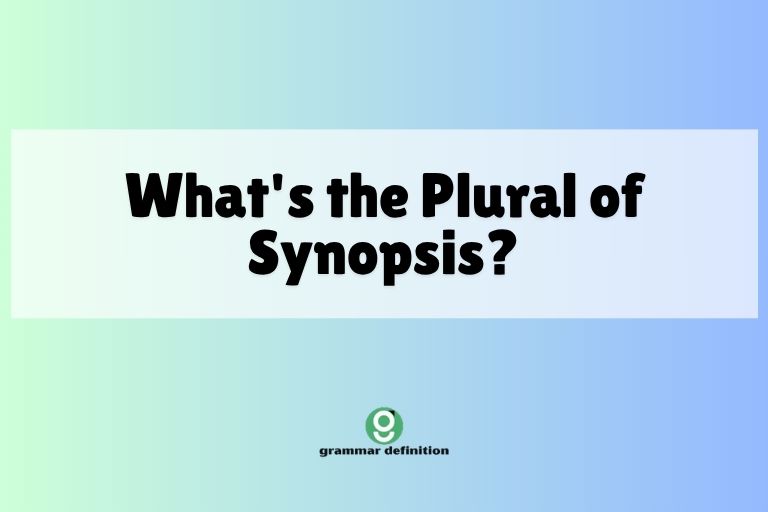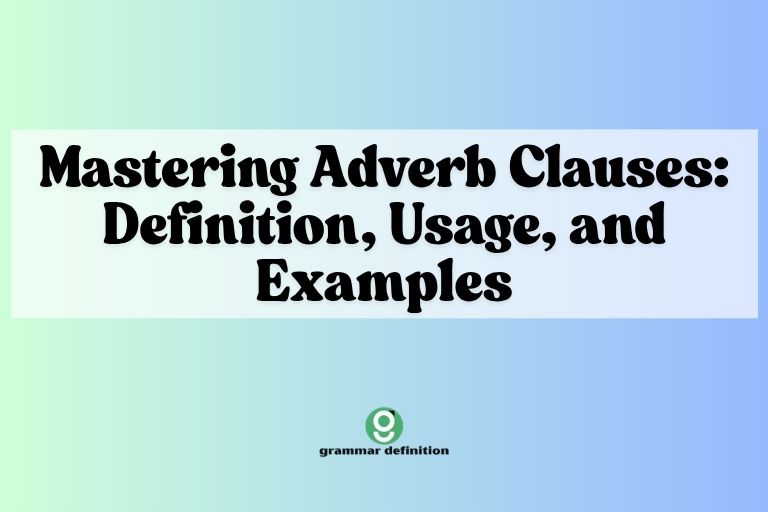Mastering Predicate Adjectives: Definition, Usage, and Examples
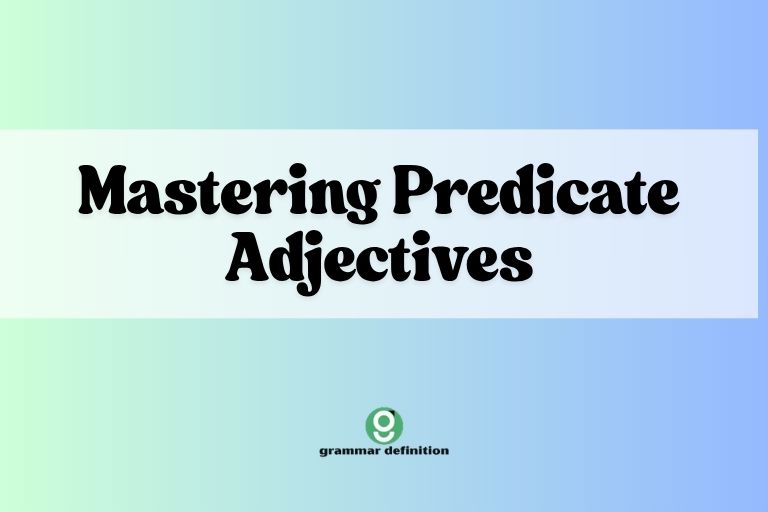
Predicate adjectives are a crucial component of English grammar, enriching sentences by describing the subject. Understanding their function and proper usage is essential for clear and effective communication.
This article provides a comprehensive guide to predicate adjectives, covering their definition, structure, types, usage rules, common mistakes, and practice exercises. Whether you’re a student, a writer, or simply looking to improve your English skills, this guide will equip you with the knowledge and tools to confidently use predicate adjectives.
Table of Contents
- Introduction
- Definition of Predicate Adjectives
- Structural Breakdown
- Types and Categories
- Examples of Predicate Adjectives
- Usage Rules
- Common Mistakes
- Practice Exercises
- Advanced Topics
- FAQ
- Conclusion
Introduction
Predicate adjectives play a vital role in descriptive writing and everyday conversation. They add detail and nuance to our language, allowing us to paint vivid pictures with words.
A solid grasp of predicate adjectives empowers you to express yourself more accurately and engagingly. This comprehensive guide is designed to help you master the intricacies of predicate adjectives, from their basic definition to advanced usage scenarios.
Whether you are an ESL learner, a student studying for exams, or a professional aiming to refine your writing, this article will provide you with the necessary knowledge and practical exercises to confidently incorporate predicate adjectives into your language skills.
Definition of Predicate Adjectives
A predicate adjective is an adjective that follows a linking verb and modifies the subject of the sentence. Unlike attributive adjectives, which precede the noun they modify (e.g., “the red car”), predicate adjectives are located in the predicate of the sentence and are connected to the subject through a linking verb. These verbs, such as be, seem, appear, become, feel, look, smell, taste, and sound, do not express action but rather connect the subject to a description or state of being.
In essence, the predicate adjective describes a quality or characteristic of the subject, providing further information about it. Therefore, understanding linking verbs is crucial for identifying predicate adjectives within a sentence.
They complete the meaning of the sentence by ascribing an attribute to the subject. This function differentiates them from other types of adjectives and makes them essential for descriptive writing.
Classification
Predicate adjectives are classified as part of the subject complement, which is a word or group of words that follows a linking verb and renames or describes the subject. The subject complement can be a noun (predicate nominative or predicate noun) or an adjective (predicate adjective).
In the case of predicate adjectives, the complement is an adjective that modifies the subject.
Function
The primary function of a predicate adjective is to describe the subject of a sentence. This description can relate to the subject’s appearance, condition, state of mind, or any other attribute that can be expressed through an adjective.
By using predicate adjectives, writers and speakers can provide a more complete and nuanced picture of the subject, enhancing the clarity and impact of their communication.
Contexts
Predicate adjectives are used in a wide variety of contexts, from simple everyday conversations to complex literary works. They are particularly common in descriptive writing, where they help to create vivid images and convey specific moods or emotions.
They are also frequently used in informative writing, to provide details and explanations about the subject being discussed. Legal, scientific, and technical writing also may use predicate adjectives for precision.
Structural Breakdown
The basic structure of a sentence containing a predicate adjective is: Subject + Linking Verb + Predicate Adjective. This structure is relatively straightforward, but it is important to understand the role of each element in order to correctly identify and use predicate adjectives.
Subject: The subject is the noun or pronoun that the sentence is about. It performs the action (if there is one) or is described by the predicate adjective.
Linking Verb: The linking verb connects the subject to the predicate adjective. It does not express action but rather indicates a state of being or a relationship between the subject and the adjective. Common linking verbs include forms of be (am, is, are, was, were, been, being), seem, appear, become, feel, look, smell, taste, and sound.
Predicate Adjective: The predicate adjective is the adjective that describes the subject. It follows the linking verb and provides information about the subject’s qualities or characteristics. It is essential that the predicate adjective modifies the subject and not another word in the sentence. This can be tested by mentally replacing the linking verb with an equals sign (=). If the sentence makes sense, then the adjective is likely a predicate adjective (e.g., “The soup is hot” can be thought of as “The soup = hot”).
Patterns and Rules
There are several patterns and rules to keep in mind when working with predicate adjectives:
- Singular Subjects: With singular subjects, use singular forms of linking verbs (e.g., “He is tall”).
- Plural Subjects: With plural subjects, use plural forms of linking verbs (e.g., “They are happy”).
- Compound Subjects: With compound subjects joined by “and,” use plural forms of linking verbs (e.g., “John and Mary are tired”).
- Compound Subjects with “or” or “nor”: When using “or” or “nor,” the verb agrees with the subject closest to it (e.g., “Neither John nor his friends are ready”).
- Phrases between Subject and Verb: Phrases between the subject and verb do not affect verb agreement (e.g., “The book, along with the pen, is on the table”).
Types and Categories
While predicate adjectives themselves don’t have distinct “types” in the same way that nouns or verbs do, it’s helpful to categorize them based on the kind of description they provide. This can aid in understanding their usage and selecting the most appropriate adjective for a given context.
Descriptive Adjectives
These are the most common type of predicate adjectives. They describe the physical appearance, qualities, or characteristics of the subject. Examples include tall, beautiful, intelligent, heavy, and colorful.
Adjectives of State
These adjectives describe the condition or state of being of the subject. Examples include tired, sick, happy, sad, angry, and awake.
Adjectives of Feeling
While overlapping with adjectives of state, these specifically describe emotions or feelings experienced by the subject. Examples include anxious, excited, bored, frustrated, and grateful.
Adjectives of Opinion
These adjectives express a subjective judgment or opinion about the subject. Examples include good, bad, interesting, boring, delicious, and awful.
Adjectives of Origin
These adjectives indicate the origin or source of the subject. These are less common as predicate adjectives, but they can appear. Examples include American, French, Asian, and African.
Examples of Predicate Adjectives
Here are several examples of predicate adjectives in sentences, categorized by the type of adjective. Each table provides a diverse range of examples to illustrate the concept clearly.
Descriptive Adjectives Examples
The following table showcases sentences that use descriptive adjectives as predicate adjectives. Notice how each adjective describes a quality or characteristic of the subject.
| Sentence | Subject | Linking Verb | Predicate Adjective |
|---|---|---|---|
| The sky is blue. | The sky | is | blue |
| The building appears tall. | The building | appears | tall |
| The flower smells fragrant. | The flower | smells | fragrant |
| Her hair is long. | Her hair | is | long |
| The car looks shiny. | The car | looks | shiny |
| The coffee tastes bitter. | The coffee | tastes | bitter |
| The music sounds loud. | The music | sounds | loud |
| The fabric feels soft. | The fabric | feels | soft |
| The painting seems colorful. | The painting | seems | colorful |
| The problem appears complex. | The problem | appears | complex |
| The solution is simple. | The solution | is | simple |
| The food tastes delicious. | The food | tastes | delicious |
| The idea sounds innovative. | The idea | sounds | innovative |
| The plan seems practical. | The plan | seems | practical |
| The weather feels warm. | The weather | feels | warm |
| The book is interesting. | The book | is | interesting |
| The movie appears entertaining. | The movie | appears | entertaining |
| The story sounds unbelievable. | The story | sounds | unbelievable |
| The question seems difficult. | The question | seems | difficult |
| The answer is correct. | The answer | is | correct |
| The room appears tidy. | The room | appears | tidy |
| The car is fast. | The car | is | fast |
| The house looks new. | The house | looks | new |
| The cake tastes sweet. | The cake | tastes | sweet |
| The music sounds beautiful. | The music | sounds | beautiful |
| The water feels cold. | The water | feels | cold |
| The design seems modern. | The design | seems | modern |
| The task appears easy. | The task | appears | easy |
| The code is clean. | The code | is | clean |
Adjectives of State Examples
This table illustrates the use of adjectives of state as predicate adjectives. Each example describes the condition or state of being of the subject.
| Sentence | Subject | Linking Verb | Predicate Adjective |
|---|---|---|---|
| He is tired. | He | is | tired |
| She seems sick. | She | seems | sick |
| They are happy. | They | are | happy |
| I feel sad. | I | feel | sad |
| The children appear restless. | The children | appear | restless |
| The patient is weak. | The patient | is | weak |
| The employees seem stressed. | The employees | seem | stressed |
| The food is stale. | The food | is | stale |
| The machine appears broken. | The machine | appears | broken |
| The door is open. | The door | is | open |
| The window is closed. | The window | is | closed |
| The computer seems slow. | The computer | seems | slow |
| The battery is dead. | The battery | is | dead |
| The plants appear dry. | The plants | appear | dry |
| The road is bumpy. | The road | is | bumpy |
| The situation seems stable. | The situation | seems | stable |
| The economy is strong. | The economy | is | strong |
| The market appears volatile. | The market | appears | volatile |
| The system is secure. | The system | is | secure |
| The network seems unstable. | The network | seems | unstable |
| The project is complete. | The project | is | complete |
| The task appears unfinished. | The task | appears | unfinished |
| The report is overdue. | The report | is | overdue |
| The deadline seems tight. | The deadline | seems | tight |
| The schedule is flexible. | The schedule | is | flexible |
| The agreement appears binding. | The agreement | appears | binding |
| The contract is valid. | The contract | is | valid |
| The law seems unclear. | The law | seems | unclear |
| The rule is strict. | The rule | is | strict |
Adjectives of Feeling Examples
This table demonstrates the use of adjectives of feeling as predicate adjectives. Each sentence conveys an emotion or feeling experienced by the subject.
| Sentence | Subject | Linking Verb | Predicate Adjective |
|---|---|---|---|
| I am anxious. | I | am | anxious |
| She feels excited. | She | feels | excited |
| He seems bored. | He | seems | bored |
| They are frustrated. | They | are | frustrated |
| We feel grateful. | We | feel | grateful |
| The audience appears enthusiastic. | The audience | appears | enthusiastic |
| The children are playful. | The children | are | playful |
| The team seems motivated. | The team | seems | motivated |
| The students are curious. | The students | are | curious |
| The customers appear satisfied. | The customers | appear | satisfied |
| The visitors are impressed. | The visitors | are | impressed |
| The employees feel valued. | The employees | feel | valued |
| The community seems supportive. | The community | seems | supportive |
| The atmosphere feels positive. | The atmosphere | feels | positive |
| The environment is welcoming. | The environment | is | welcoming |
| The experience seems rewarding. | The experience | seems | rewarding |
| The opportunity is promising. | The opportunity | is | promising |
| The future appears bright. | The future | appears | bright |
| The outlook is optimistic. | The outlook | is | optimistic |
| The mood feels celebratory. | The mood | feels | celebratory |
| The atmosphere is festive. | The atmosphere | is | festive |
| The event seems successful. | The event | seems | successful |
| The outcome is favorable. | The outcome | is | favorable |
| The result appears encouraging. | The result | appears | encouraging |
| The progress is steady. | The progress | is | steady |
| The pace seems sustainable. | The pace | seems | sustainable |
| The approach is effective. | The approach | is | effective |
| The strategy appears sound. | The strategy | appears | sound |
| The method is reliable. | The method | is | reliable |
Adjectives of Opinion Examples
The following table provides sentences that use adjectives of opinion as predicate adjectives. These adjectives express a subjective judgment or opinion about the subject.
| Sentence | Subject | Linking Verb | Predicate Adjective |
|---|---|---|---|
| The movie is good. | The movie | is | good |
| The food tastes delicious. | The food | tastes | delicious |
| The book seems interesting. | The book | seems | interesting |
| The idea sounds awful. | The idea | sounds | awful |
| The performance was bad. | The performance | was | bad |
| The artwork appears beautiful. | The artwork | appears | beautiful |
| The plan sounds brilliant. | The plan | sounds | brilliant |
| The solution is perfect. | The solution | is | perfect |
| The design seems elegant. | The design | seems | elegant |
| The music is wonderful. | The music | is | wonderful |
| The landscape appears stunning. | The landscape | appears | stunning |
| The view is breathtaking. | The view | is | breathtaking |
| The experience seems unforgettable. | The experience | seems | unforgettable |
| The moment is precious. | The moment | is | precious |
| The memory is cherished. | The memory | is | cherished |
| The opportunity is valuable. | The opportunity | is | valuable |
| The lesson seems insightful. | The lesson | seems | insightful |
| The advice is helpful. | The advice | is | helpful |
| The suggestion sounds practical. | The suggestion | sounds | practical |
| The approach is innovative. | The approach | is | innovative |
| The strategy seems effective. | The strategy | seems | effective |
| The method is reliable. | The method | is | reliable |
| The system appears efficient. | The system | appears | efficient |
| The process is streamlined. | The process | is | streamlined |
| The workflow seems organized. | The workflow | seems | organized |
| The environment is collaborative. | The environment | is | collaborative |
| The atmosphere feels welcoming. | The atmosphere | feels | welcoming |
| The community seems supportive. | The community | seems | supportive |
| The network is connected. | The network | is | connected |
Usage Rules
Using predicate adjectives correctly involves understanding a few key rules. These rules ensure grammatical accuracy and clarity in your writing and speech.
- Agreement with the Subject: The predicate adjective must agree in number with the subject. If the subject is singular, the adjective should describe a singular entity; if the subject is plural, the adjective should describe a plural entity.
- Use of Linking Verbs: Predicate adjectives always follow linking verbs. Make sure the verb you use is indeed a linking verb (connecting the subject to a description) and not an action verb.
- Placement: The predicate adjective always comes after the linking verb. Avoid placing it before the verb or in another part of the sentence.
- Avoiding Adverbs: Do not use adverbs in place of predicate adjectives. Adverbs modify verbs, adjectives, or other adverbs, not nouns or pronouns.
Exceptions and Special Cases
While the rules are generally straightforward, there are a few exceptions and special cases to be aware of:
- Collective Nouns: When the subject is a collective noun (e.g., team, group, family), the verb and predicate adjective can be singular or plural depending on whether you are referring to the group as a single unit or as individual members.
- Sentences with “There”: In sentences that begin with “there,” the subject follows the verb. The predicate adjective should still agree with the subject, even though it comes after the verb.
Common Mistakes
Several common mistakes can occur when using predicate adjectives. Understanding these errors can help you avoid them in your own writing and speaking.
- Using Adverbs Instead of Adjectives: This is one of the most frequent errors. Remember that predicate adjectives describe the subject, while adverbs modify verbs, adjectives, or other adverbs.
- Incorrect Verb Agreement: Make sure the linking verb agrees in number with the subject.
- Misidentifying Linking Verbs: Confusing linking verbs with action verbs can lead to incorrect sentence structure and meaning.
- Incorrect Placement: Placing the adjective in the wrong part of the sentence can disrupt the flow and clarity of the sentence.
Here is a table illustrating some common mistakes and their corrections:
| Incorrect | Correct | Explanation |
|---|---|---|
| He feels badly. | He feels bad. | “Badly” is an adverb; “bad” is the correct predicate adjective. |
| The flowers is beautiful. | The flowers are beautiful. | The verb “is” does not agree with the plural subject “flowers.” |
| She seems quick. | She seems quickly. | The predicate adjective must be an adjective and not an adverb. |
| Happy, they were. | They were happy. | The predicate adjective should follow the linking verb. |
| The food tastes deliciously. | The food tastes delicious. | “Deliciously” is an adverb; “delicious” is the correct predicate adjective. |
| The sky are blue. | The sky is blue. | The verb “are” does not agree with the singular subject “sky.” |
| They appears tired. | They appear tired. | The verb “appears” does not agree with the plural subject “they.” |
| The music sounds loudly. | The music sounds loud. | The predicate adjective must be an adjective and not an adverb. |
| The cake tastes sweetly. | The cake tastes sweet. | The predicate adjective must be an adjective and not an adverb. |
| The water feels coldly. | The water feels cold. | The predicate adjective must be an adjective and not an adverb. |
Practice Exercises
Test your understanding of predicate adjectives with these practice exercises. Identify the predicate adjective in each sentence, or complete the sentence with an appropriate predicate adjective.
Exercise 1: Identifying Predicate Adjectives
Identify the predicate adjective in each of the following sentences:
| Question | Answer |
|---|---|
| 1. The soup is hot. | hot |
| 2. She seems happy. | happy |
| 3. The music sounds loud. | loud |
| 4. The flowers are beautiful. | beautiful |
| 5. He feels tired. | tired |
| 6. The car looks shiny. | shiny |
| 7. The coffee tastes bitter. | bitter |
| 8. The fabric feels soft. | soft |
| 9. The problem appears complex. | complex |
| 10. The solution is simple. | simple |
Exercise 2: Completing Sentences
Complete each of the following sentences with an appropriate predicate adjective:
| Question | Answer |
|---|---|
| 1. The sky is _____. | blue |
| 2. The weather feels _____. | warm |
| 3. The book seems _____. | interesting |
| 4. The food tastes _____. | delicious |
| 5. The idea sounds _____. | innovative |
| 6. The plan seems _____. | practical |
| 7. The movie appears _____. | entertaining |
| 8. The story sounds _____. | unbelievable |
| 9. The question seems _____. | difficult |
| 10. The answer is _____. | correct |
Exercise 3: Correcting Mistakes
Correct the following sentences, which contain errors in the use of predicate adjectives:
| Question | Answer |
|---|---|
| 1. He feels badly. | He feels bad. |
| 2. The flowers is beautiful. | The flowers are beautiful. |
| 3. She seems quick. | She seems quick. |
| 4. Happy, they were. | They were happy. |
| 5. The food tastes deliciously. | The food tastes delicious. |
| 6. The sky are blue. | The sky is blue. |
| 7. They appears tired. | They appear tired. |
| 8. The music sounds loudly. | The music sounds loud. |
| 9. The cake tastes sweetly. | The cake tastes sweet. |
| 10. The water feels coldly. | The water feels cold. |
Advanced Topics
For advanced learners, there are some more complex aspects of predicate adjectives to explore. These include using multiple predicate adjectives in a sentence and understanding how predicate adjectives interact with other grammatical structures.
Multiple Predicate Adjectives
It is possible to use multiple predicate adjectives to describe the subject of a sentence. When doing so, separate the adjectives with commas, except for the last adjective, which is preceded by “and.”
Example: “The house is big, beautiful, and expensive.”
Predicate Adjectives in Complex Sentences
Predicate adjectives can also be used in complex sentences, where they may be part of a dependent clause. In these cases, it is important to correctly identify the subject and linking verb within the clause to ensure proper usage.
Example: “Because she is intelligent and hardworking, she is successful.”
FAQ
Here are some frequently asked questions about predicate adjectives:
- What is the difference between a predicate adjective and an attributive adjective?
An attributive adjective precedes the noun it modifies (e.g., “the red car”), while a predicate adjective follows a linking verb and describes the subject (e.g., “The car is red“).
- What are
some common linking verbs?
Common linking verbs include forms of be (am, is, are, was, were, been, being), seem, appear, become, feel, look, smell, taste, and sound.
- Can a sentence have more than one predicate adjective?
Yes, a sentence can have multiple predicate adjectives to provide a more detailed description of the subject (e.g., “The house is large, beautiful, and well-maintained”).
- How do I avoid using adverbs instead of predicate adjectives?
Ensure that the word following the linking verb describes the subject, not the verb itself. If it describes the manner in which the verb is performed, it should be an adverb; if it describes the subject’s state or quality, it should be an adjective.
- Are predicate adjectives always necessary in a sentence?
No, predicate adjectives are not always necessary, but they add descriptive detail and can enhance the clarity and impact of your writing.
Conclusion
Predicate adjectives are essential for adding depth and detail to your writing and speech. By understanding their definition, structure, types, usage rules, and common mistakes, you can confidently incorporate them into your language skills.
Regular practice and attention to detail will help you master the art of using predicate adjectives effectively. From descriptive writing to everyday conversations, predicate adjectives are a valuable tool for expressing yourself clearly and engagingly.
Embrace this knowledge and continue to refine your understanding of English grammar for enhanced communication.

